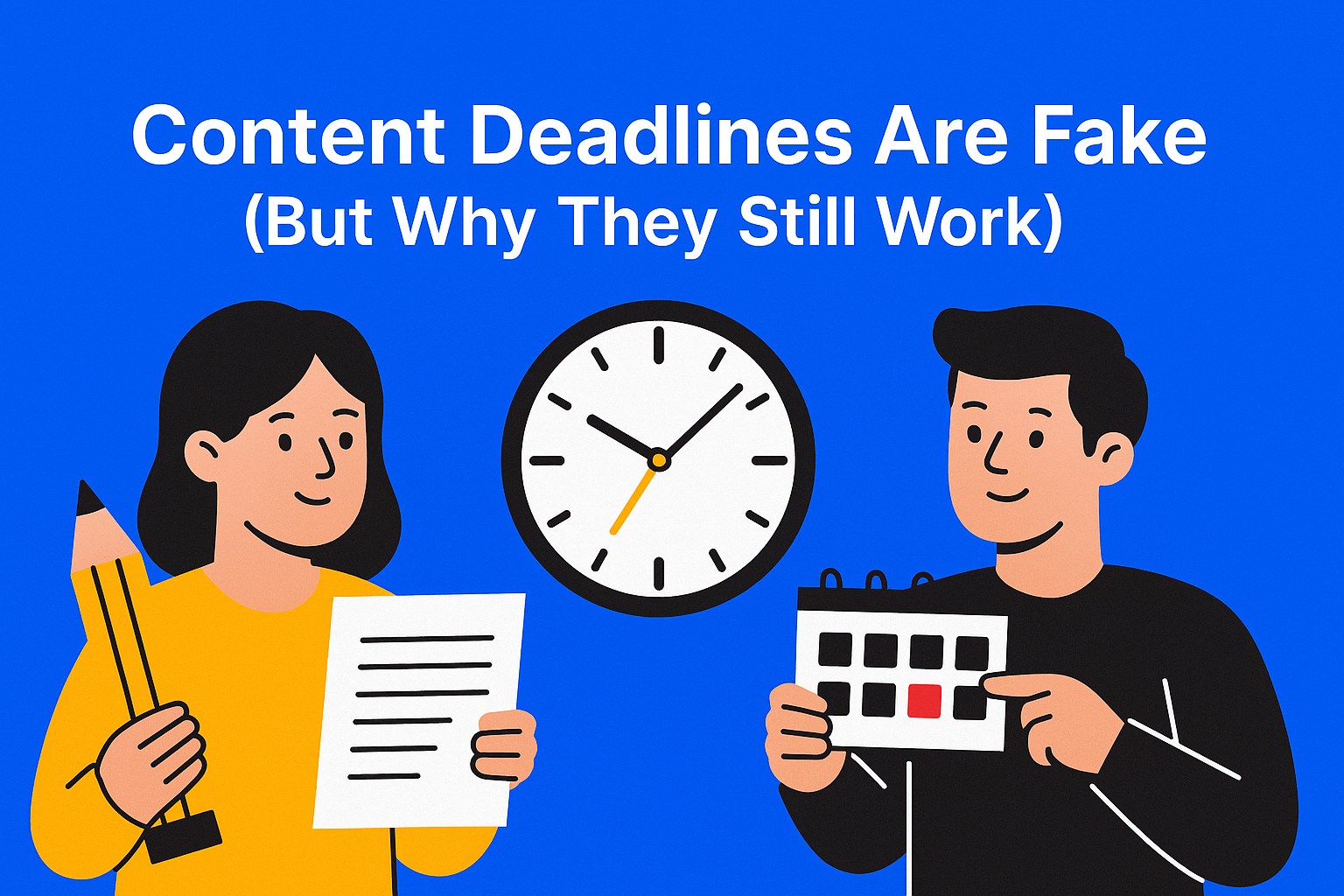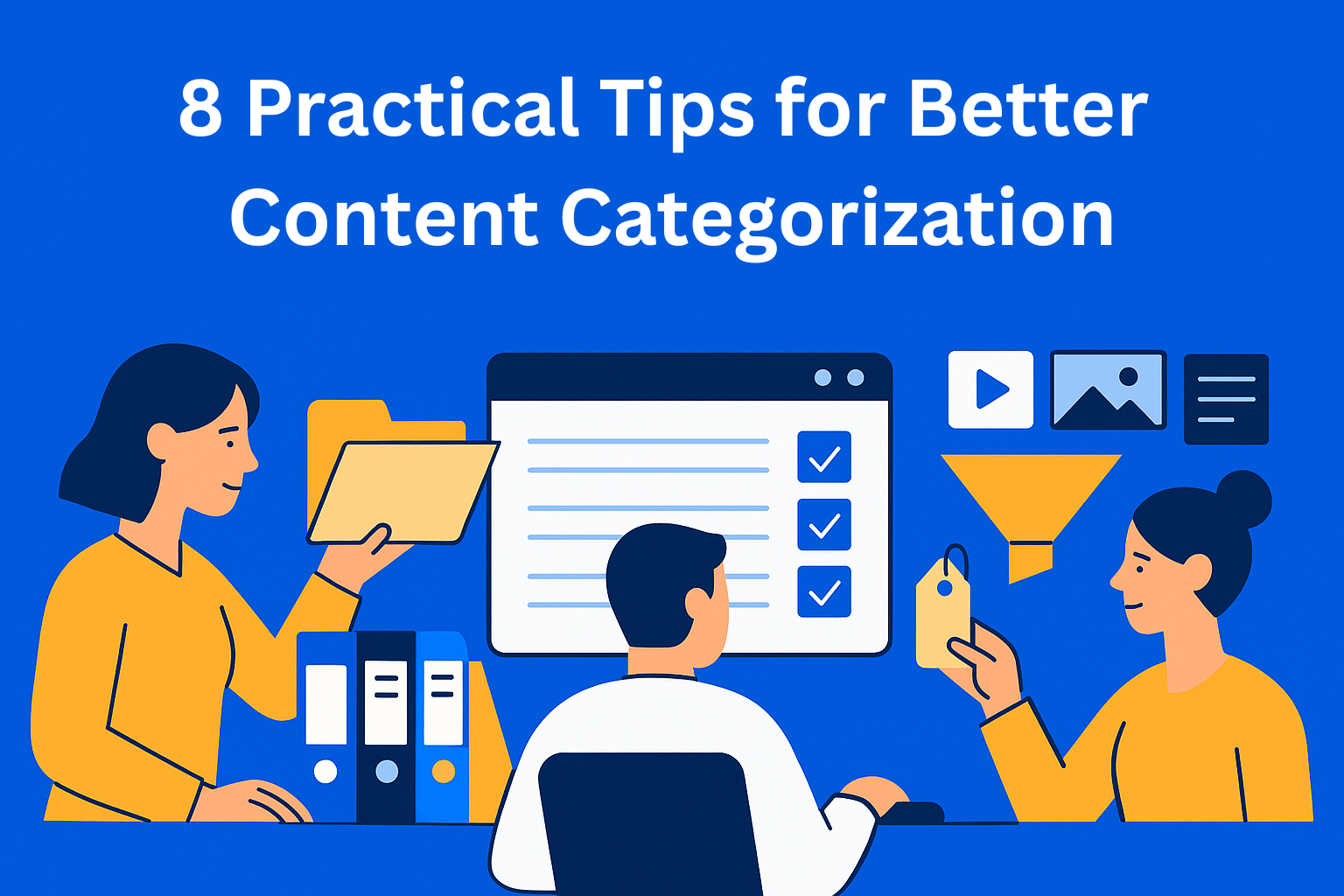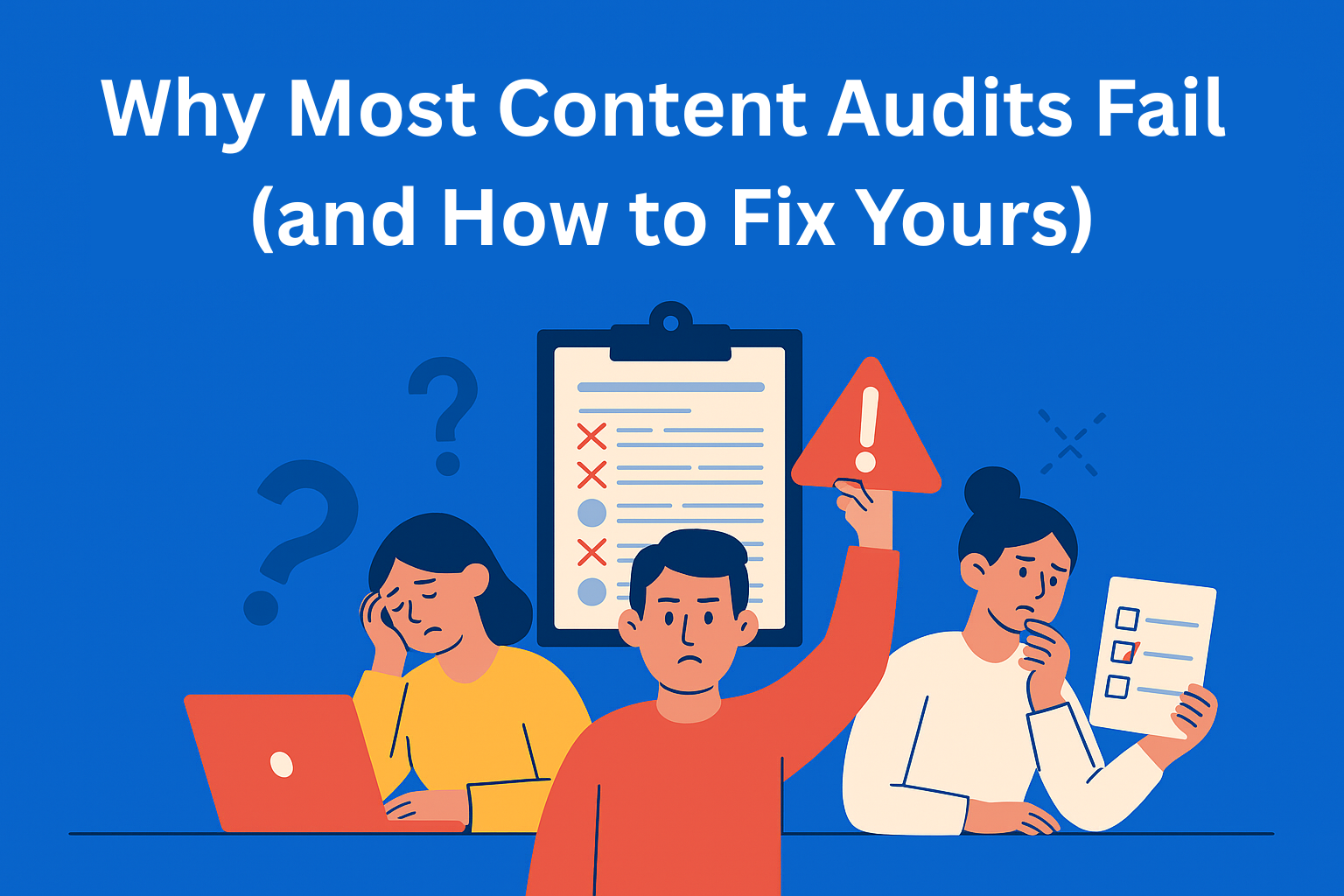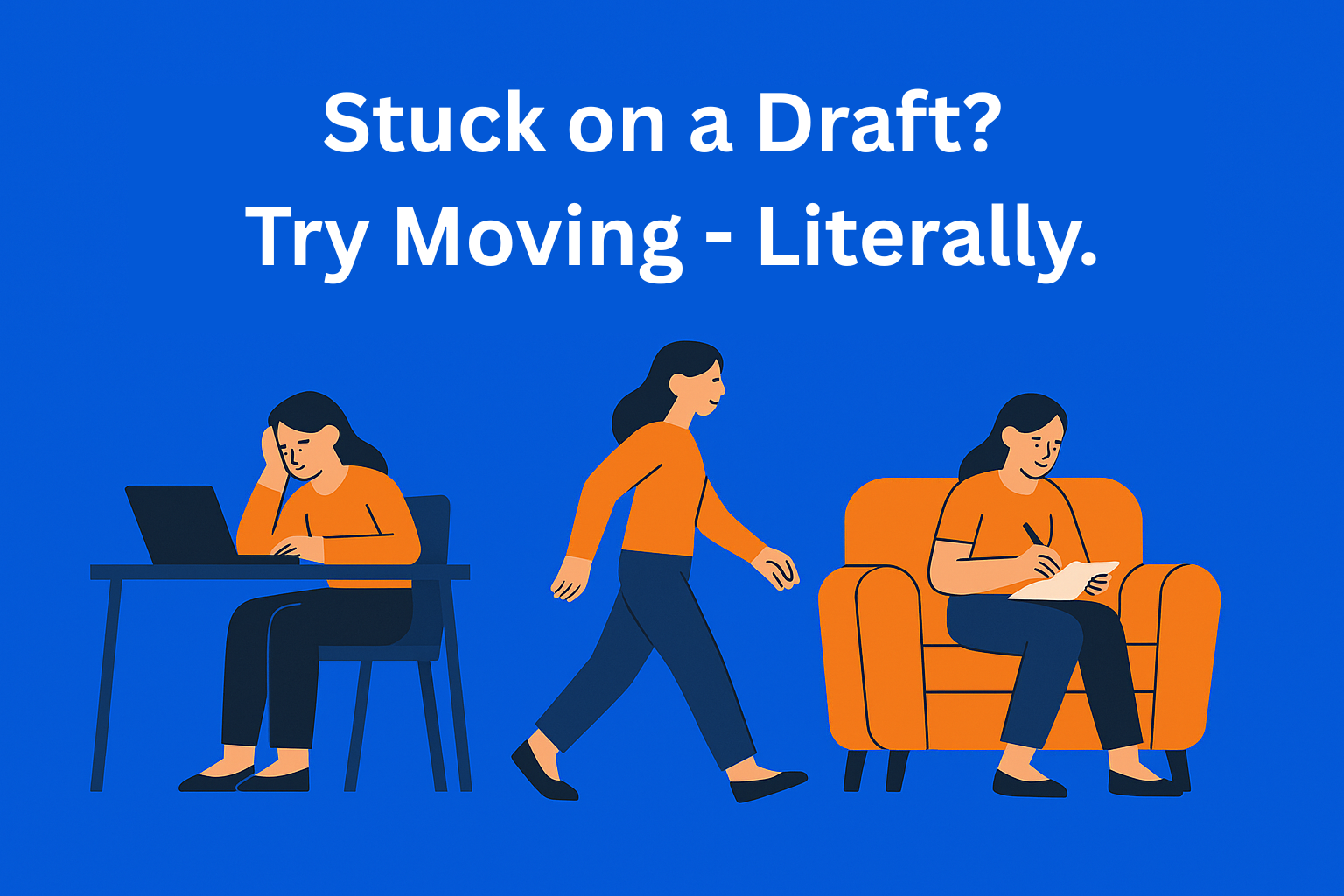Content Deadlines Are Fake (But Why They Still Work)
Deadlines may be “fake,” but they keep content teams moving. Learn why dates don’t matter as much as momentum, accountability, and consistency, and how setting the right deadlines keeps your content strategy alive and on track.

Content deadlines can feel like a bit of a trick. If your blog comes out on Wednesday instead of Tuesday, no one’s going to panic. Not the client, not the audience, not the algorithm. So why do we stick to those calendar dates? Why do teams still plan content around fixed deadlines? The answer is simple: deadlines aren’t about dates - they’re about momentum, accountability, and team alignment.
Key Takeaways
- Deadlines are “fake” but functional - they act as agreements, not strict rules, pushing teams to deliver.
- Momentum over perfection - soft structures keep content moving forward and prevent endless over-editing.
- Accountability and alignment - deadlines connect writers, editors, and designers into one clear system.
- Creativity thrives under structure - time limits help focus ideas, cutting overthinking and boosting execution.
- Deadlines shape brand rhythm - regular publishing builds trust, reliability, and audience loyalty.
Deadlines Are “Fake,” but They Have a Purpose
When we talk about deadlines in the world of content, we rarely mean hard, unmovable ones. No one loses money if you publish a blog a day later. No one cancels a partnership because an Instagram post goes out at 1 PM instead of 10 AM. Content deadlines are more like agreements than strict rules.
But it’s exactly this “fakeness” that gives them strength. A deadline pushes you to act. It gives you structure and a sense of progress. Without it, it’s easy to get lost in endless editing and planning.
In other words, a deadline doesn’t exist to stress you out, it exists to guide you. That’s what makes it such a powerful tool in content marketing.
Why Deadlines Matter Even If They’re “Fake”
Deadlines are like train tracks: it’s not that the train can’t turn, but the tracks keep it going in the right direction. In the world of content creation, that direction means a lot. Deadlines help us by:
a) Maintaining Momentum
When you know you have a blog due Tuesday, a podcast on Friday, and a newsletter next Wednesday, you move in rhythm. Without that rhythm, it’s easy to get stuck in the planning phase. Deadlines help you keep up the pace and stay in motion.
Anyone who’s worked in a content team knows how easy it is to lose momentum. One break turns into two, two into a month, and suddenly your brand looks like it disappeared. Deadlines protect you from that. They don’t guarantee perfect content - they guarantee that content will actually get published.
b) Building Accountability
When you have a deadline, you have a deal. Maybe you didn’t sign a contract to publish a blog on Tuesday, but your team counts on it. The copywriter expects the editor to finish by Monday, the designer plans visuals for midweek. Deadlines connect all those small tasks into one big system.
Without deadlines, everyone works at their own pace and communication falls apart. A deadline creates accountability and clarity. When everyone knows what needs to be done and by when, it’s easier to stay on track and make decisions.
c) Keeping the Team Aligned
Deadlines are like a metronome. They help everyone in the team work in the same rhythm. When you know the blog goes live on Tuesdays and the newsletter on Thursdays, everyone knows when their part needs to be done.
In content operations, everything is connected: SEO research, copywriting, design, publishing, and distribution. If one part is late, the whole system slows down. Deadlines are what maintain team alignment and make the brand look professional and consistent.
How to Set “Good” Deadlines
Now that we know deadlines aren’t here to stress us out but to keep us moving, let’s see how to make them actually work.
1. Set Realistic Deadlines
Don’t plan three blog posts a week if your team can only handle one. Overpromising leads to frustration and burnout. Realistic deadlines keep the team motivated and help maintain quality.
2. Use “Soft” and “Hard” Deadlines
Soft deadlines are internal - for drafts, edits, or visuals. Hard deadlines are for publishing. For example: draft by Monday, publish by Wednesday. This keeps the rhythm without unnecessary pressure.
3. Create Mini-Deadlines
Big deadlines often feel overwhelming. When you break them down into smaller phases (“brief → draft → edit → publish”), the process feels simpler. Each mini-deadline gives a sense of progress and keeps momentum going.
4. Use Tools
Deadlines work best when everyone can see them. Tools like EasyContent, Asana, ClickUp, or Airtable make it easier to track tasks, communicate, and plan content. When the team has a clear overview, stress goes down and accountability goes up.
When Deadlines Don’t Work
Deadlines are powerful, but only if they make sense. When set the wrong way, they can backfire.
- Unrealistic deadlines: Expect too much too quickly, and you’ll end up with a stressed team and shallow content.
- Deadlines taken lightly: If they keep moving for no reason, they lose their meaning. A deadline should be flexible but also respected.
- Deadlines without context: If you don’t know what a deadline supports (a campaign, a trend, a product launch), it’s just a date on a calendar.
When a deadline stops serving its purpose, it’s time to redefine it. In a content strategy, the goal of deadlines isn’t to trap you - it’s to help you move forward.
Deadlines and Creativity
Many people think deadlines kill creativity, but they actually help you focus. When you know you have limited time, it’s easier to decide what matters most and not waste time over-polishing or overthinking. Instead of chasing perfection, you look for solutions that work.
Deadlines give you a simple structure to create within. They don’t stop your creativity - they push you to turn ideas into action. That’s why they’re such an important part of the content creation process - not to limit you, but to move you forward.
Deadlines as Part of Brand Rhythm
Managing content isn’t just about writing and publishing. It’s about building a rhythm your audience can recognize. When a brand publishes regularly, it looks professional, active, and reliable. People know when to expect new content and naturally keep coming back.
Imagine your favorite podcast, the one you listen to every Wednesday, suddenly starts releasing episodes irregularly - every other week, or once a month. Over time, you’d probably stop following it. The same goes for brands. Deadlines help maintain that rhythm and keep the brand present in people’s minds.
Consistency might be the most important part of a content strategy. Without deadlines, it’s almost impossible to stay regular and consistent.
Conclusion
Yes, deadlines are fake. No one’s going to punish you if you’re late. But just because they’re fake doesn’t mean they don’t matter. They’re a tool that helps us move, communicate, and bring order to chaos. They’re not about pressure - they’re about organization and movement.
So next time someone says the blog is due Tuesday, don’t think about the date. Think about everything that a date sets in motion: momentum, accountability, teamwork, planning, and consistency. That’s the real power of deadlines.






